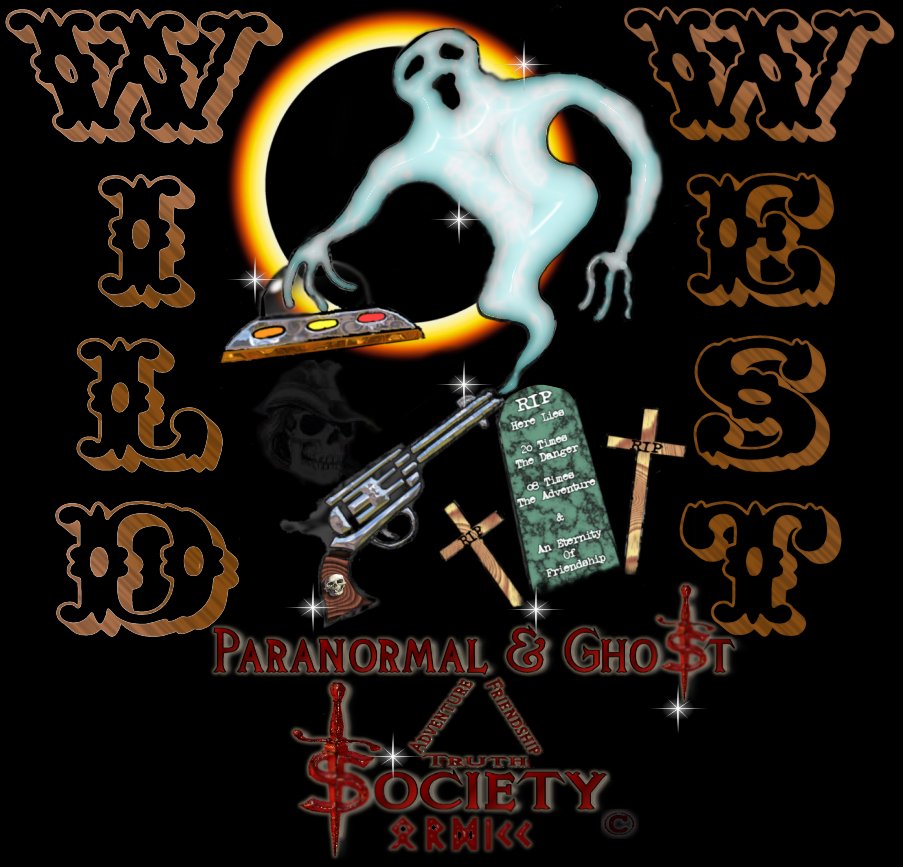| |


  

As the
founder of the Paranormal & Ghost Society I see allot
of sites some make me very excited while others sadden
me. Cathedral Canyon has become just that its an exciting
place to hike around in but at the same time its very sad
due to the amount of vandlism. Rumor has it at one time
their were over a 100 statues within the canyon and now
all that remains is the broken replica of Christ in the
Andes statue.
It is a
very spiritual location and yeah the locals consider it
to be haunted perhaps by the outlaw who is buried by
it.....spiritual energy left over from the past.....and
at one time when it was untouched by vandals many bizarre
statues. The restrooms were built into the sides of the
cliffs....and lights graced the canyons. Their once was a
suspension bridge crossing the canyon that looked like
the Golden gate Bridge. It had religious music softly
playing so that when visitors traversed through here they
could try to make a spiritual connection bringing closer
to Christ.
As the
founder of our society we preserve such places with our
photography but also reminding others of what once was. I
have heard people hearing gun shots perhaps others in the
area target practicing and trust me they do I seen it
with my own eyes at other locations in southern Nevada.
Roland
the man who built this place did it out of his heart
never made a penny but expended his own funds for it. It
reminded me of how I am with our paranormal site. In the
end this mans dream was crushed after his death just as
my dream to build a site with so many great people has
been crushed over the years do to haters. I have found
out vandals come in many forms on and offline people who
just have the need to destroy. The one thing they have
long forgotten is the spirit cannot be destroyed or
broken. So if you wander this place entering those big
old wrought iron gates remember what I have said when you
see how deplorable the location has become.
The
replica Christ of the Andes is missing its head...the
brush now is overgrown in the canyon.....doors are
broken....statues missing or crumbling.....piles of
debris at the end of the canyon tell us its a party spot
along with all the litter. The creator of this place died
a place where he felt safe at a second home much like the
paranormal is to me.
Below is
more in depth stories about the outlaw and history. Its
definitely worth the read and yes the place is haunted!
My take on it is that its a high energy location you
always feel watched and their are some sounds which do
not seem to add up. For example when we took a break in
the canyon we could hear walking or shuffling of feet
which were not ours. The bridge is broke....the entrance
which has wrought iron gates is overgrown.....and the
canyon walls are crumbling. However despite the canyons
condition I feel its one of the best places to see every
star in the sky.
© By
Lord Rick
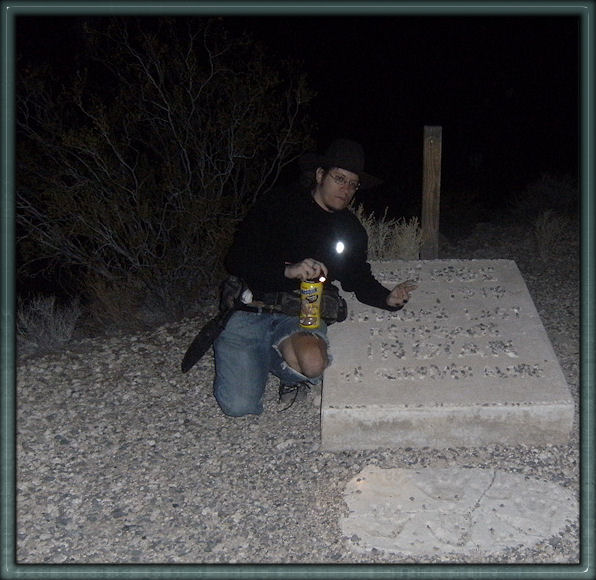 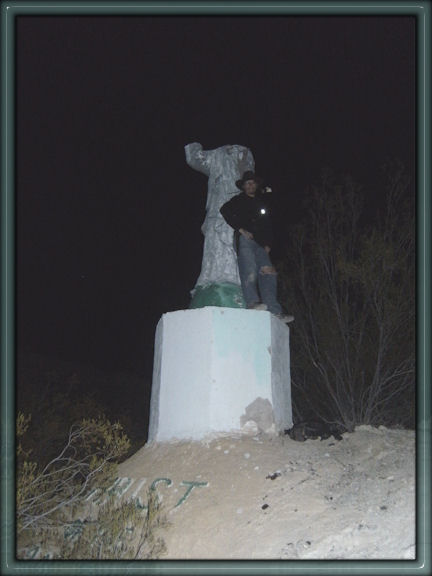 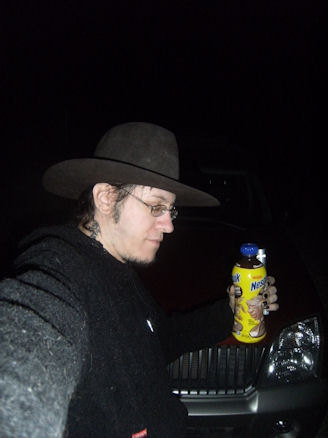 
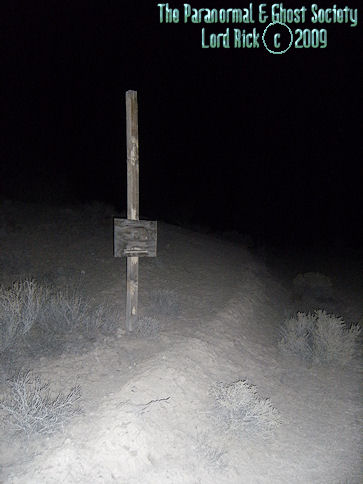  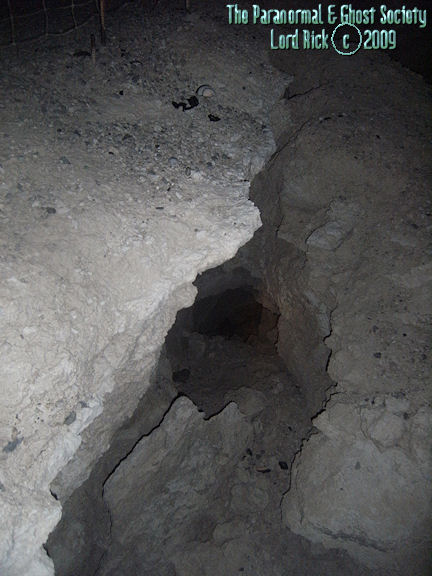 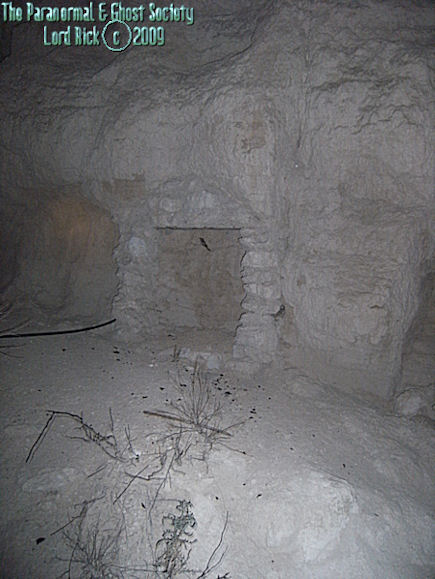 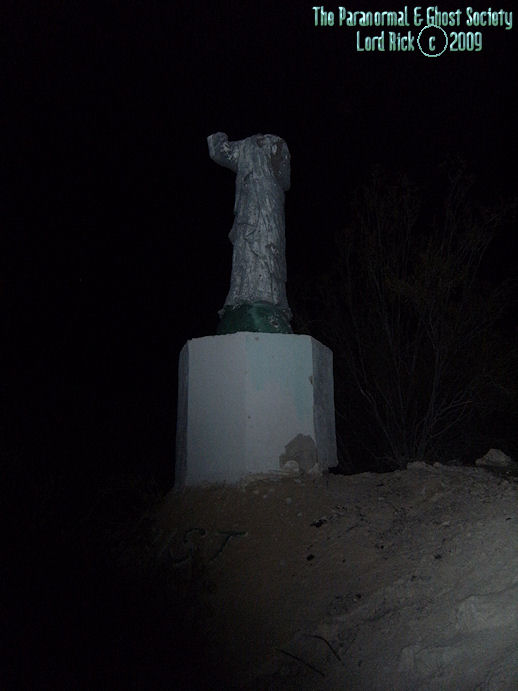 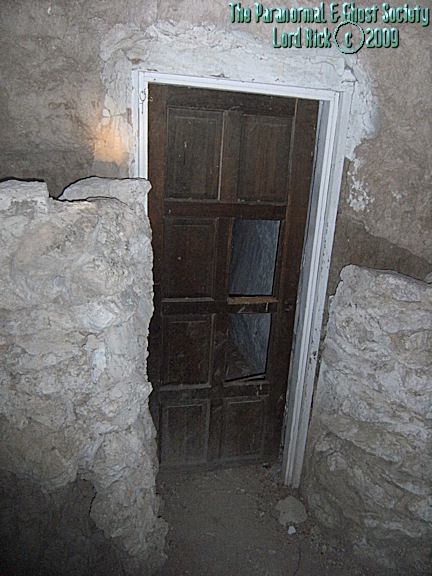 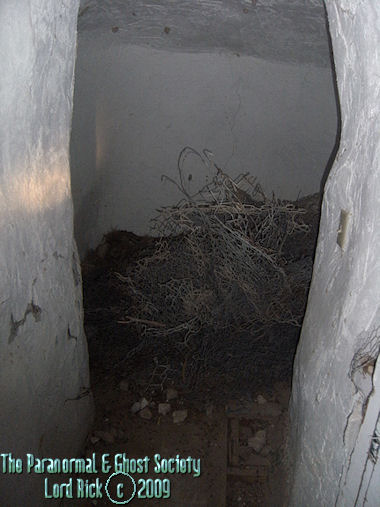  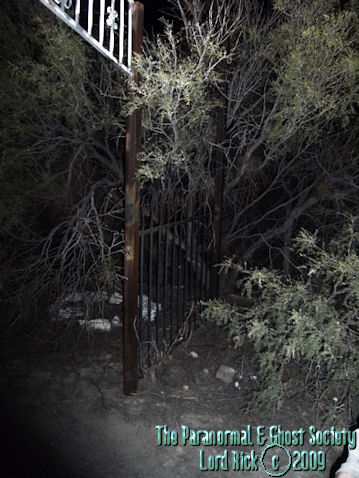  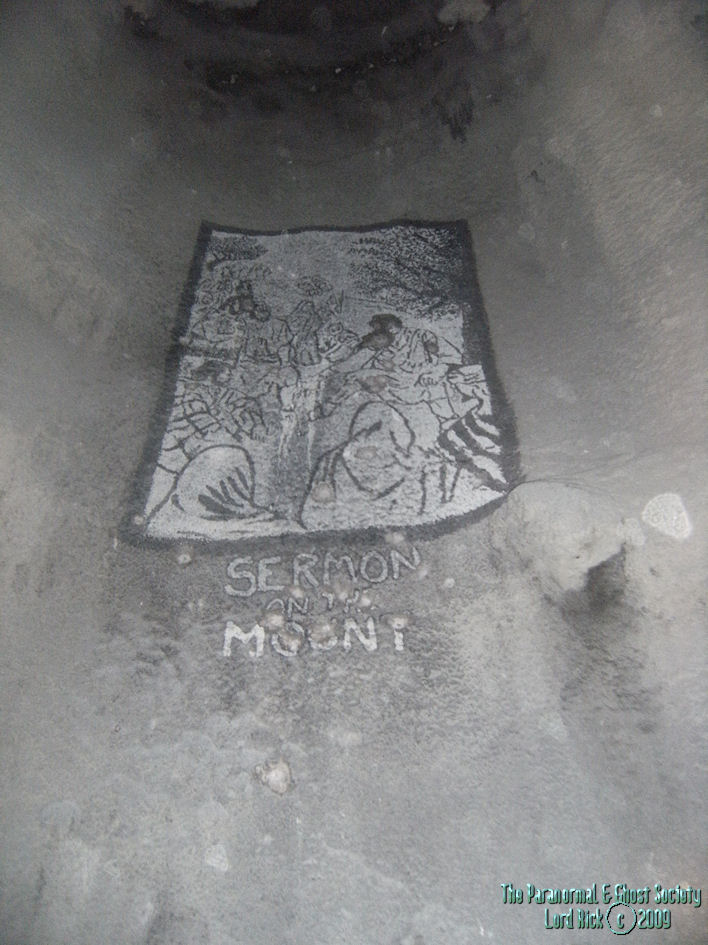 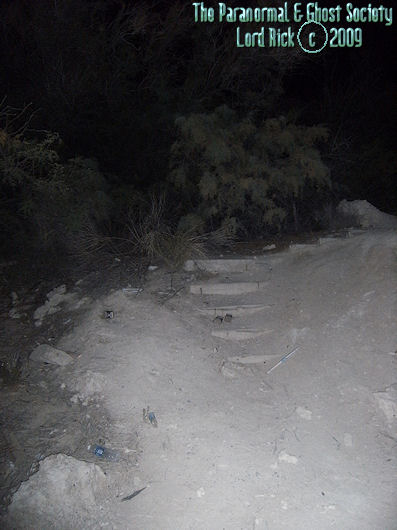 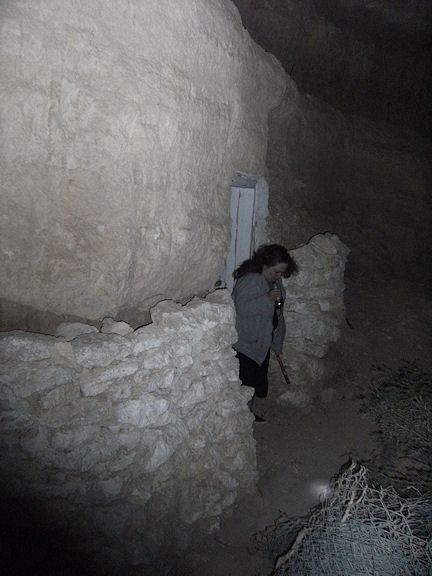 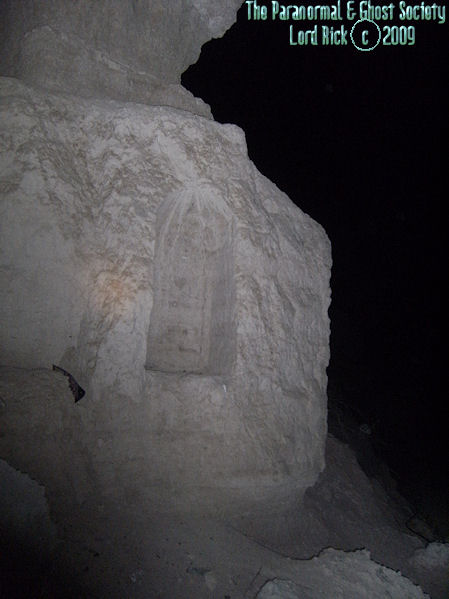 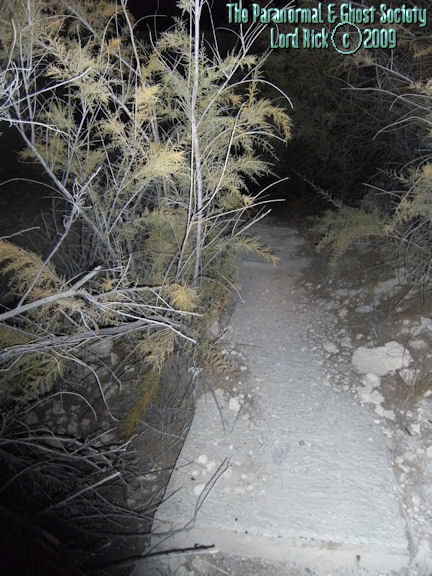 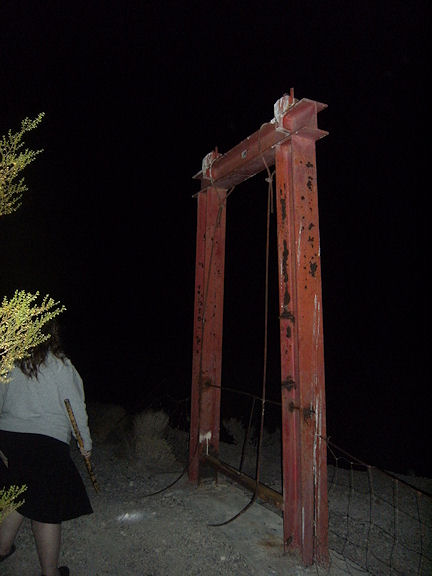
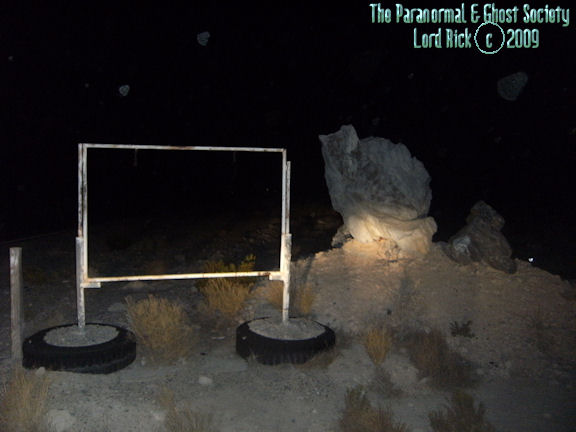 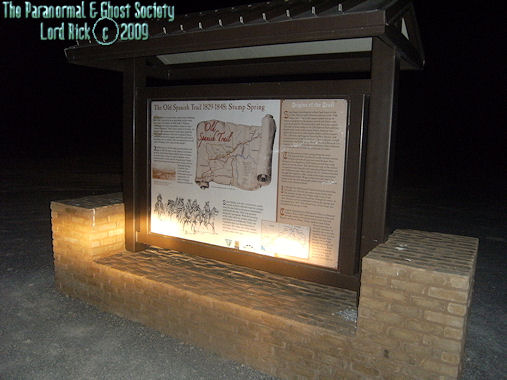 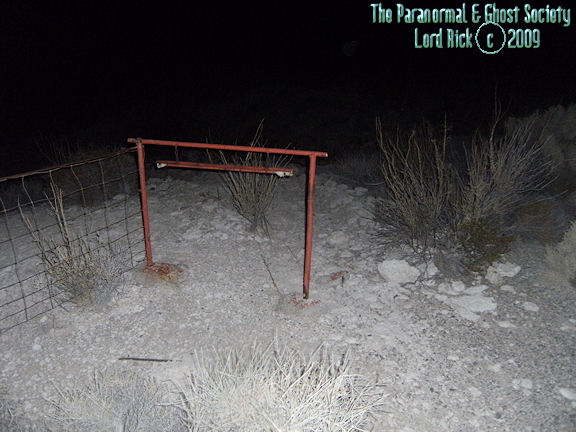 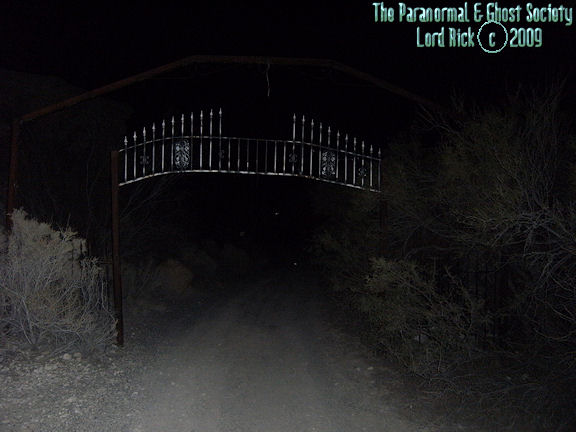 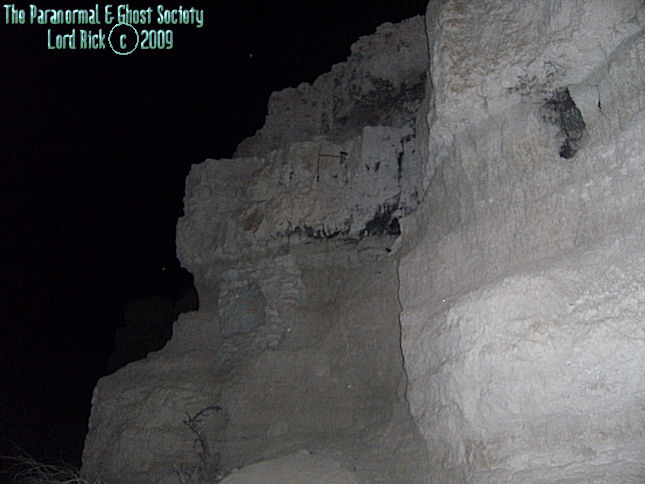 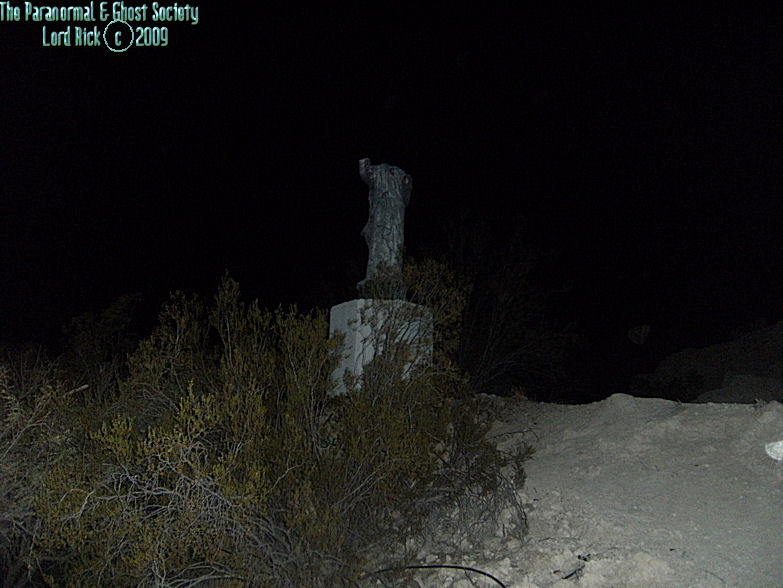
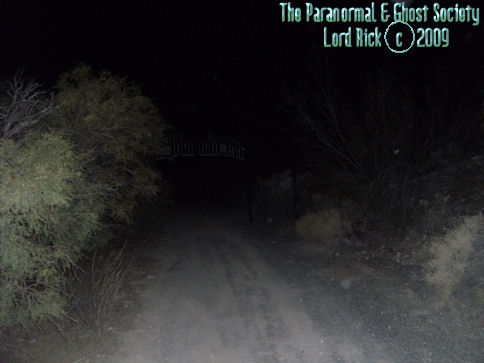   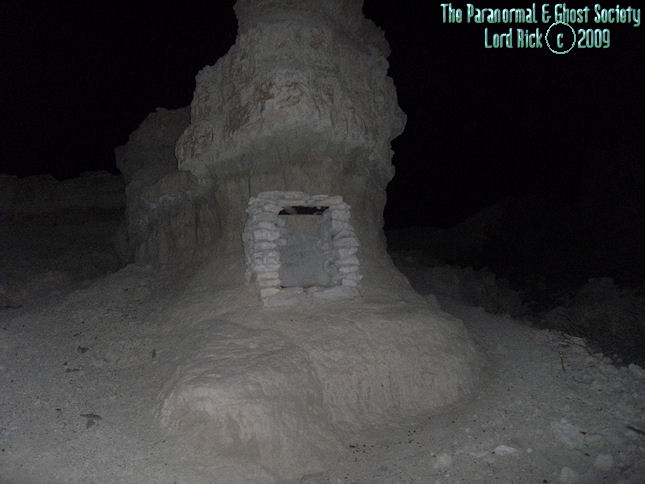 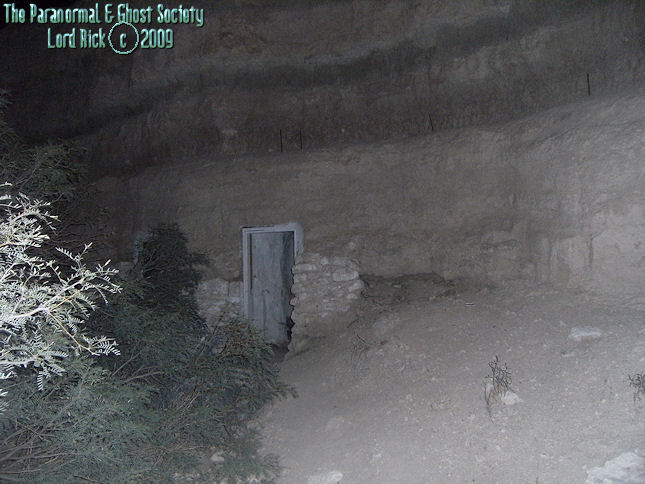
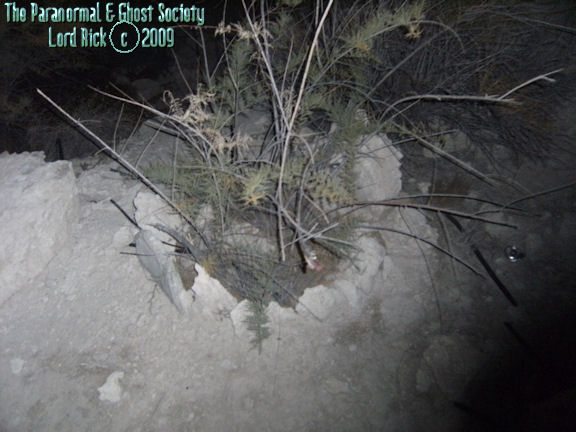 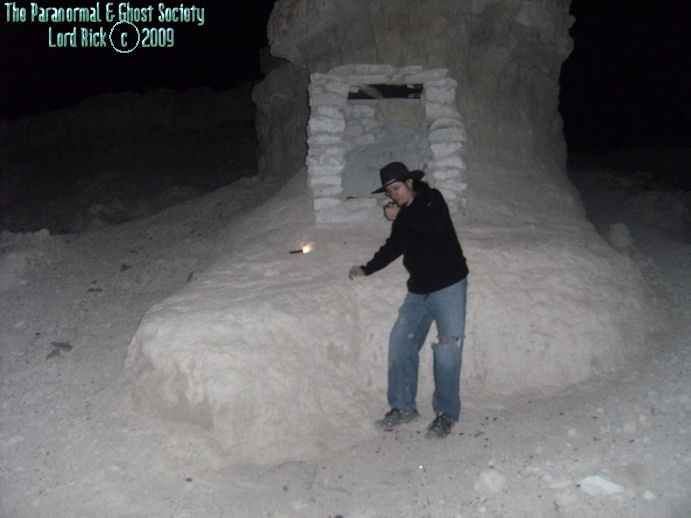 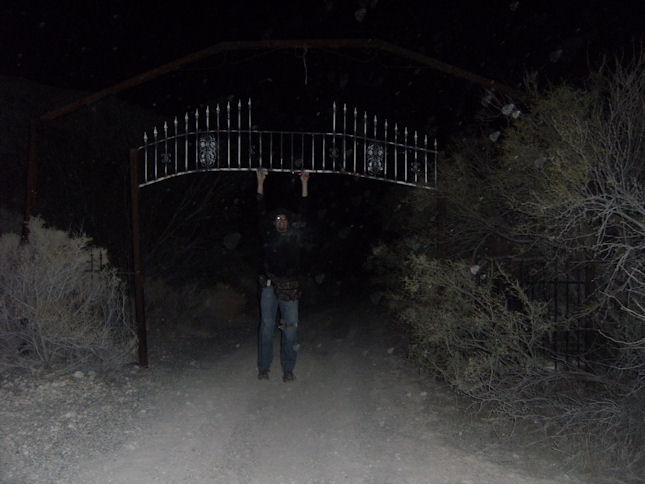   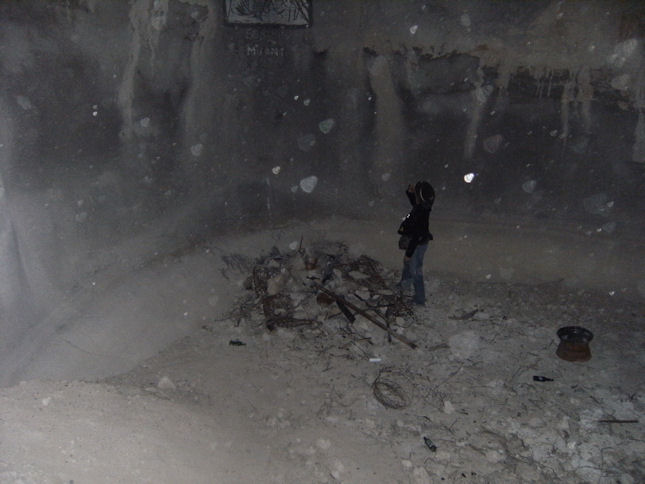
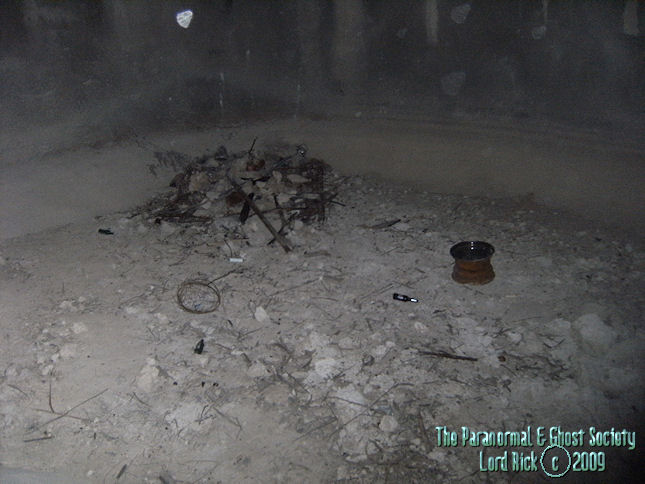 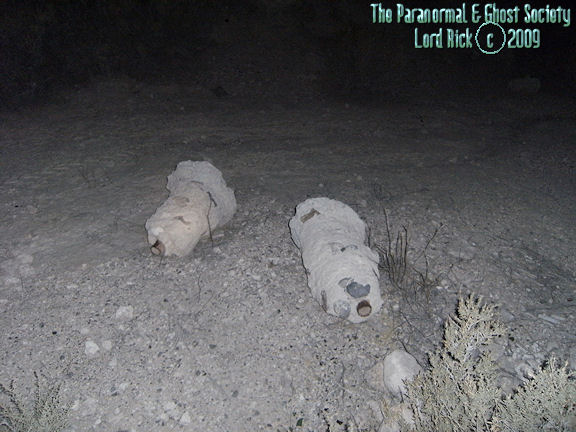 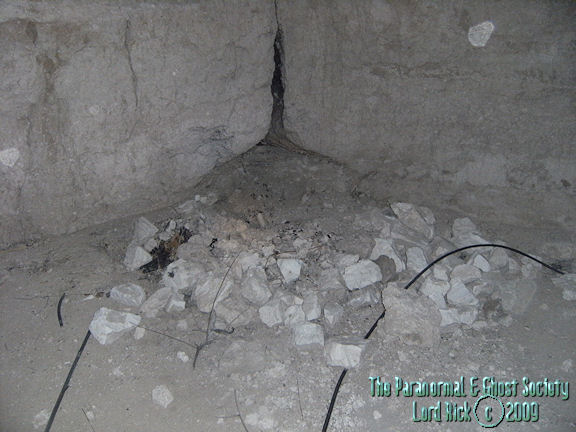
The man who built
Cathedral Canyon
ROLAND WILEY OWNED
HUGE RANCH IN EARLY PAHRUMP; ERECTED THE DEBASED LANDMARK
By BOB
MCCRACKEN
Editor's note: This is
the first of a two-part series on Roland Wiley, a key
figure in Pahrump decades ago - and the man who built the
once spiritually beloved but now vandalized Cathedral
Canyon.
In my lifetime, much of it spent as a professional
anthropologist - an occupation defined as the study of
human beings - I have had the honor of getting to know a
small number of people who seem, much of the time, to
reside on a slightly higher plane of existence than most
of us.
While fully a part of the everyday world we all occupy,
these people approach life somewhat differently,
expressing a kind of serenity and detachment from the
tumult and tribulations of ordinary existence. They are,
to a large degree, gentle and tolerant toward others, and
show a deep concern for humanity and for the suffering of
others.
Christians often use the term "saintly" to
describe such persons; the Eastern religions refer to
them as "enlightened." Psychologists sometimes
call this state of being "self-actualization."
All three are talking about the same thing. While most of
us live in a world seen through glasses that are more or
less fogged, the people I'm talking about seem to see
things through brighter lenses.
Roland Wiley was such an individual. He lived on a
slightly higher plane than most of us. In his own way,
Roland's view of the world was every bit as rich and
wonderful as another such individual I knew, a Hopi
medicine man who was the head of the Eagle clan and
"keeper" of the eagles. This man spoke of how
we must cherish our mother earth and love and protect her
as we would our own mother. Truly, Roland and the Hopi
man were focused on the same thing - the great value
inherent in each of us and the importance of cultivating
our own humanity and that of others. Roland was a highly
significant figure in Pahrump Valley history and also
holds a prominent place in Las Vegas history. In the
remainder of this and in next week's column, I will
discuss Roland Wiley and his unique contribution to our
history.
Coming to Nevada
Roland was born near Council Bluffs, Iowa, in 1904; his
grandparents were immigrants from Germany and
Switzerland. He spent the first 16 years of his life on a
farm in Shelby, Iowa, then the family moved to Wisconsin.
He graduated from the University of Wisconsin and then
attended law school at George Washington University. In
1927, he served for a year as a clerk in a large law firm
in Washington, D.C.
While in Washington, he heard talk of plans to construct
a large dam on the Colorado River near a small Nevada
town called Las Vegas. In 1928, he came west to visit
relatives in Los Angeles, and from there took the train
to Las Vegas, arriving on New Year's Day 1929. He read in
the local paper that Las Vegas was going to be a good
place for a professional person to build a career. He
liked the little town and decided to stay and set up a
law practice. "In those days," he said,
"the town was small, about 4,000 people. Every
lawyer took whatever came along - corporations, civil
suits, probate, divorce cases."
Nine years later, Roland was elected district attorney of
Clark County. He served one term in that post, which
coincided with a period of tumultuous growth in Las
Vegas. The U.S. Army Air Corps established a gunnery
school at the Las Vegas Airport (later Nellis Air Force
Base), and construction began on Basic Magnesium at what
became Henderson.
Roland, like many people in early Las Vegas, sensed the
place had great economic potential. In about 1940, he
tried to interest a Los Angeles man, who had wide
financial connections, in constructing a "big
hotel" on Highway 91 south of downtown, the stretch
of undeveloped desert that later became the Strip. The
man didn't bite, but the idea was apparently in the air.
As district attorney, Roland was the key member of the
local gambling board, which controlled local licenses.
One day not long after trying to convince the man from
Los Angeles to build a hotel, Roland, dressed in
coveralls, was working on a piece of property he owned in
North Las Vegas.
Art Hamm, a prominent local lawyer, walked up and
introduced Roland to a client named Tommy Hull. Following
an exchange of pleasantries, Hamm got to the point. He
asked, "If we build a hotel on the highway [91], can
we get a gambling permit?" Roland replied,
"Hell, yes," and they walked away. Things were
done that easily then.
On April 3, 1941, Hull opened the El Rancho Vegas, the
first hotel casino on Highway 91 in Las Vegas. This was
the beginning of the Las Vegas Strip. Last year, 35
million people visited.
Roland ran unsuccessfully for Nevada governor in 1942
against Ted Carville and in 1950 against Vail Pittman (an
important figure in the early development of Tonopah).
Roland described both opponents as "good men."
Of both races he said, "I never condemned anybody or
belittled anyone, or spoke ill of them at all." Then
he added [speaking in 1988], "I think if the present
politicians would do likewise, the public would like it a
lot better." He said one man pretending to have
longer wings sprouting from his shoulder blades did not
make sense to him.
Although Roland was well aware of the economic potential
of the Las Vegas Valley, he never invested the bulk of
his money there. He preferred the Pahrump Valley. When I
asked him why, he replied, "I never liked the Las
Vegas Valley because it was hardpan and sandy gravel, and
over in the Pahrump Valley, it's all good American soil;
you know, agricultural soil. Being an Iowa farm boy, why,
I put more value to the land; less value here [in Las
Vegas]."
The beginning of
his passion
In 1936, there were two Yount ranches in the Pahrump
Valley. One was the Manse Ranch, sometimes called the
Yount Ranch acquired by Joseph and Margaret Yount in
1877. In 1936, that ranch was unoccupied and had been in
foreclosure.
The other Yount property consisted of three homesteads
located near the Old Spanish Trail about 10 miles south
of the Manse Ranch. It had been owned by John Yount, son
of Joseph and Margaret. John Yount died and in 1936, his
common-law wife, Belle, hired Roland to advise her on any
rights she might have to John's property.
Roland made his first long dusty trip to the Pahrump
Valley to look at the Yount place and talk to Belle. He
ended up buying the ranch and, over the next 50-plus
years, it became, I think it is fair to say, the major
focus of his life. He purchased nearby properties until
eventually he owned more than 10,000 acres in that part
of the Pahrump Valley.
When Roland purchased the Yount property, he accessed it
on a dirt road via Goodsprings and Sandy Valley (then
called Mesquite Valley), which took three-and-a-half
hours from Las Vegas, or made a four-and-a-half hour trip
via the Amargosa Valley.
Roland spent his later years turning that property into
what would become Hidden Hills Ranch. He took a lovely
but undistinguished desert box canyon and used it as an
artist would use canvas or a playwright the stage to
present his extraordinary view of life and humanity. He
called it Cathedral Canyon, and it was the true passion
of his life.
McCracken is the author of A History of Pahrump, Nevada
and 11 other books about Nye County published by the Nye
County Press. Send questions and comments to
rdmassociates@yahoo.com.
Editor's
note: This is the second part of a two-part series on
Roland Wiley, a highly significant figure in Pahrump
Valley history and also a man who holds a prominent place
in Las Vegas history.
Wiley moved to Las Vegas in 1929 and established
a successful law practice there. In 1936, after the
passing of John Yount, John's common law wife, Belle,
hired Roland to advise her on any rights she may have to
John's ranch.
The ranch was located in Pahrump Valley about 10 miles
south of the famous Manse Ranch in the southern portion
of the valley.
Roland ended up purchasing John Yount's place and became
a major figure in Pahrump Valley. He constructed
Cathedral Canyon on the ranch, which became a significant
tourist attraction in the valley for a number of years.
Transforming the
canyon
When Roland bought the Yount ranch, the main
building was Yount's house. It was about 20 by 34 feet.
The foundation consisted of a few stones. Board and
batten walls were two inches thick with two-by-four studs
set sideways on four-foot centers. It was hot in the
summer and cold in the winter.
Roland did some remodeling of the house and later built a
small addition. He spent most weekends there for the
remainder of his life. He retired from his law practice
in 1952, and from then on, he was sometimes there during
the week.
Over the years, Roland undertook all sorts of
construction and agricultural projects on the ranch. He
bought his own grader and built many roads and helped
maintain the road down Sandy Valley.
He built a small astronomical observatory and, at one
time or another, produced a variety of agricultural
products, including pheasants and peaches. He constructed
his own airstrip and took to flying back and forth to Las
Vegas until he had a close call over the Spring
Mountains.
Although the Pahrump Valley in the area of John Yount's
ranch looks flat from the Tecopa highway, a good portion
of it is made up of countless little hills, mesas,
benches, and box canyons.
Thus, Roland's name for the ranch: the Hidden Hills
Ranch. These features join the Pahrump Valley floor
within walking distance of the house. It was through a
construction project undertaken in a nearby box canyon
that Roland's true nature was revealed.
He took a lovely but undistinguished desert box canyon
and used it as an artist would use canvas or a playwright
the stage to present his extraordinary view of life and
humanity. He called it Cathedral Canyon, and it was the
true passion of his life.
Roland began thinking about something on the order of
Cathedral Canyon around 1955. A visit to Guatemala after
an earthquake and the sight of many churches with broken
walls and corners still standing with religious figurines
sometimes remaining intact provided the inspiration for
the canyon.
By the mid-1970s, Cathedral Canyon was fully functional,
although Roland continually added to and modified the
landmark.
Cathedral Canyon is about one-third mile long, from 50-
to 200-feet wide, and perhaps 50- to 60-feet deep. Its
walls are so steep that it is really only accessible from
the open end. Roland graded the canyon floor and built
two trails, one up the canyon from its mouth, the other
from the rim to the floor. A 200-foot-long suspension
bridge was built across the canyon, allowing visitors a
special view from above. A large statue of Christ of the
Andes looked down from a position near the bridge.
Beautiful stained glass windows were set in the canyon
walls. Small statues and art objects, both religious and
secular, sat in niches in the walls along the canyon's
length.
A pump-fed waterfall cascaded down the enclosed end of
the canyon. Benches and chairs were placed along the
trail so visitors could sit and relax and contemplate.
The canyon was illuminated with colored lights at night.
Many said the best time to see it was after sundown.
Along the trail that wound its way through the box canyon
Roland hung scores of steel-framed boards featuring
quotes and poems expressing his philosophy and advice for
living.
They were both religious (nondenominational) and secular.
One framed message set in large black letters against a
white background read, "I expect to pass through
this world but once; any good thing therefore that I can
do, or any kindness that I can show to any fellow
creature, let me do it now; let me not defer or neglect
it, for I shall not pass this way again."
Another read:
"Too much blood has run under the bridges, and down
the canyons of the World to keep on believing that only
one road is right."
Another read:
"Now and then you meet someone
Whose fine and thoughtful ways
Add a little something special
To just ordinary days."
Another read:
"Be considerate of every man
my young fellow,
whether he is Black, Brown,
White, Red, or Yellow.
Of all the billions born on earth
Not one child did
choose its birth."
Another read:
"For what are we all in our high conceit
When Man in the Canyon
With God may meet."
There were quotes from Albert Einstein and Abraham
Lincoln, and other famous persons. One stop in the canyon
featured a lovely letter from Jesus that someone had
composed.
The canyon attracted thousands of visitors every year.
There was no admission, and you were on your own when
visiting.
People loved it, as proved by the registration book
Roland maintained. Visitors from around the world made
comments, with many saying the message and serenity found
there were better than any church; others said the place
was more enjoyable than Las Vegas. In the late 1980s,
Roland and I planned to write and publish a picture book
on Cathedral Canyon.
I deeply regret that we somehow just never got it done. I
know that Roland spent tens of thousands of dollars of
his own money every year building and maintaining
Cathedral Canyon. And he never received a dime from it.
It was his gift to the world. And what a gift it was. It
was the real thing, the work of the folk in the highest
sense.
Roland died some years ago. Al Carpenter, an old friend
and employee, tried to keep the canyon going for a while,
but without Roland, it was a lost cause. Cathedral Canyon
is gone now. Roland's wonderful gift has been trashed and
it lies in ruins. His cabin has also been vandalized.
(Longtime residents of Pahrump continue to speak of the
canyon with reverence, and bitterly lament the damage
done by heartless vandals.)
Once, Roland and I were sitting in his cabin talking. He
said, "Pretty soon I'll be up in heaven looking down
on everybody with their problems." If you are
watching, Roland, we miss you. And we miss your humanity.
McCracken is the author of A History of Pahrump, Nevada
and 11 other books about Nye County published by the Nye
County Press. Send questions and comments to
rdmassociates@yahoo.com.
Legend put to rest in
Nye?
EARLY 1900S KILLER
MAY BE BURIED SOUTH OF PAHRUMP
By CASSIE WELLS

On an expanse of private
property near the remnants of Cathedral Canyon at the
southern tip of Nye County, there's a concrete slab that
marks the grave of Queho, the renegade Paiute Indian
whose double-digit killing spree between 1910 and 1919
makes Nevada's other bad guys look positively benign by
comparison.
As many as 30 people, from prospectors to woodcutters,
night watchmen to a hapless miner's wife, felt the blow
of Queho's ax or the blast of his .30-30 rifle - his
weapons of choice - as they tried to go about their
business in the rough country around Eldorado Canyon,
near Searchlight, at the beginning of the last century.
Queho (pronounced Key-ho) killed them for their boots or
for a sack of grain or for no good reason whatsoever. He
ate raw snakes, lived in caves along the Colorado River
and preyed on those brave enough, or foolish enough, to
venture into the wild regions. He had no conscience and
he showed no mercy.
That's what legend says anyway. The facts may say
something different. But what does seem widely agreed
upon is that human remains said to be Queho's were buried
by former Clark County District Attorney Roland Wiley on
land at the edge of his Cathedral Canyon in 1978.
Wiley had purchased a plastic sack of bones for $100 that
was reputed to contain all that was left of the
bloodthirsty renegade. The grave marker Wiley put for
Queho - little stones affixed to the concrete slab - read
"Quehoe, 1889-1919, Nevada's Last Renegade Indian,
He Survived Alone." Those words have since worn off,
and Queho rests in obscurity not far from the small
canyon where Wiley once placed statues
Where was he, or at least his skeletal remains, for
nearly 60 years? Did he really kill all those people?
What's true and what's not?
Well, the Ballad of Queho is as much about the two-decade
killing spree as it is about the perilous journey of
those bones in the aftermath. Here's how it all began:
Early in October of 1910 the body of an elderly man, J.
M. Woodworth, was discovered in his lonely cabin on
McCullough Mountain. He'd had his skull caved in by two
powerful blows from a knotty pine club, though nothing
appeared to have been taken. It looked like an isolated
incident.
Then in mid-November of 1910, about six weeks later, the
body of Gold Bug Mill night watchman L.W. "Doc"
Gilbert was found at the remote mill on the Arizona side
of the Colorado River near Eldorado Canyon. He'd been
shot in the back by a .30-30 rifle and his camp had been
ransacked. Now there were two victims and, despite the
disparity in the murder weapons, everyone in this
isolated hinterland was sure that there was a single
wanton killer on the loose.
Fear and outrage prevailed, especially among members of
the white community, until a blind 100-year-old Indian
named Canyon Charlie rode his mule into Nelson and
helpfully suggested that maybe Queho, a reclusive Indian
who trapped and hunted along the Colorado River, was the
culprit. Whether that was true or not, suddenly the
"mad dog killer of Eldorado Canyon" had a name.
A posse was formed, and "Queho!" was the call
to arms in southern Nevada as 1910 turned to 1911.
But no matter how they tried, they never caught their
elusive prey. And the killings continued.
For nearly eight years, prospectors were found shot in
the back, their boots taken along with their meager
supplies. Travelers never made it to their destinations -
their bleached skeletons found only after predators
disturbed their shallow graves. "Queho!" was
whispered in trepidation, and no one felt safe.
Then came the bloody winter of 1919. The Techatticup Mine
outside of Nelson was being worked by a group of hardy
individuals, including Irvin Douglas, who lived in a tent
cabin with his wife, Maud, and their four children. On
the night of Jan. 21, 1919, the family had gone to bed
early to escape the cold: the wind off the Colorado
River. Around 11 p.m. Maud Douglas got up to investigate
a noise coming from the kitchen and walked into a shotgun
blast fired at point blank range. She died on the spot,
her body blown across the room and across the bedding of
the smallest children. The killer, it seemed, had been in
the process of raiding the larder when Maud Douglas
interrupted him.
There is no describing the sense of horror and anger the
pervaded the small mining community and Southern Nevada
at large after that. Another posse was formed, and a
$2,000 bounty was placed on Queho's head, for everyone
believed he was the culprit.
During an arduous, month-long search in the dead of
winter, the posse found 12 more bodies - from prospectors
felled along the trail to an entire mining camp of five
men slaughtered in their cabin. They also found signs of
Queho all along the Colorado River, from his distinctive
footprints along the riverbed to the ashes of his still
warm campfire. But they never saw Queho. And they never
caught him. And then the killings stopped.
Nothing was heard of Queho again until 1940, when two
prospectors came upon the body of a male American Indian
in a hidden cave along the Colorado River. He had been
dead a long time and was almost mummified. His bony hands
were gripping his abdomen and his leg was wrapped up; it
looked like he'd died in agony, most likely from a
rattlesnake bite. And, what's more, the cave was full of
booty - boots, clothes, ammunition, weapons - some of it
fitting the description of things stolen from murder
victims over the years. Even the murdered night
watchman's badge was said to be among the items found in
the cave.
Las Vegas Chief of Police, Frank Wait - a member of the
famed 1919 posse - was called upon to make an
identification. "I'd know those bones
anywhere!" he is reputed to have said as he gave the
skeleton a swift kick on its backside. Queho, it seemed,
had finally been found.
The only question that remained: What to do with the
bones? The squabble started right then. A next-of-kin
promptly sold the bones for $25 to Frank Wait, but a bit
of a legal snafu kept the bones stacked in the back room
of a local mortuary until they came into possession of
the Las Vegas Elks, who produced what was then the city's
biggest celebration, Helldorado. The Elks built a replica
of the cave and displayed the bones with the recovered
artifacts well into the 1950s.
But eventually even Queho's fame began to wane, and the
dusty bones were largely forgotten until 1974, when they
somehow ended up as an exhibit (whether proposed or in
actuality) in the Museum of Natural History at UNLV.
After protests about this callous display - though
certainly a step up from the carnival-style Helldorado
exhibit - the bones ended up in a plastic bag.
Then Roland Wiley pulled out his $100, and we know the
rest.
The question of whether Queho actually killed all those
people has still never been answered satisfactorily. Over
the years he's been vilified, demonized and made into a
folk hero. His biography - what little is actually known
- has been exaggerated and embellished to the point that
no mortal man could have done what he did.
In all likelihood, "Queho" is the scapegoat for
a number of heinous villains killing in a time when
lawlessness was the norm and desperadoes were, well, both
desperate and armed. The real Queho took the truth with
him to the grave.
(Sources: David Millman and Thonni C. Morikawa of the
Nevada State Historical Society; Frank Wright, former
curator of NSHS; UNLV Special Collections; Tony and
Bobbie Werly of the Techatticup Mine; members of the Maud
Douglas family; "The First 100: Persons Who Shaped
Nevada" by K. J. Evans; "Searchlight: The Camp
that Didn't Fail" by U.S. Sen. Harry Reid; Dustin
George; Georgia Lewis; Joe May; Charles H. Niehuis in
"The Nevadan," June 11, 1978; N. H. Lounsberry
in "Old West," Fall 1964; Ray Chesson; Nevada
historian Philip Earl.)
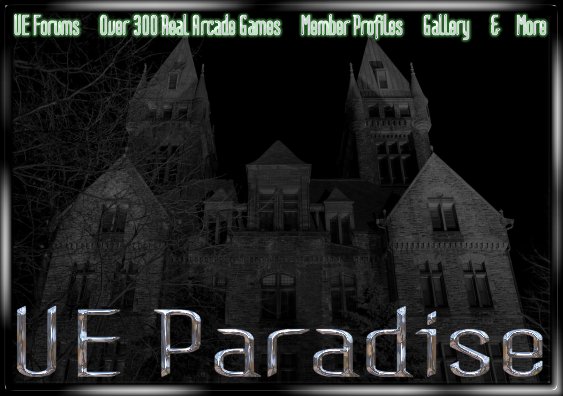
|
|
| |
society, Mib, conspiracy,
time travel, specters, Armageddon, prophets, prophecy,
paranormal, ghosts, aliens, Buffalo, haunted houses,
cryptozoology, dimensions, apocalypse, Atlantis, curses,
monsters, wildman, yeti, cemetery, stigmata, vampyre,
vampires, angels, bizarre, metaphysics, Atlanta,
Louisiana, Myrtle Beach, planet x, mothman, jersey devil,
apparitions, werewolf, werewolves, devils, vortexes,
Bermuda triangle, lycanthropes, mystery, ancient,
spirits, cydona, mythology, Charlotte, Atlanta, Mobile,
possession, possess, mailing list, parapsychology,
poltergeist, evp, investigation, crop circles, Roswell,
abduction, project blue book, living dinosaurs, religious
miracles, ny, sightings, north Carolina, south, brown
mountain, cleansing, shadowmen, beast, ogopogo, death,
portals, spontaneous human combustion, zombies, ouija
boards, nostradamus, Edgar Cayce, art bell, George
Nooray, Magick, Paganism, Wicca, Tennessee, Halloween,
bigfoot, Sasquatch, ufo, grays, ufos, vortexes, alien,
hybrids, Haunting's, demons, demonology, occult, mystics,
lochness, chupacabras, equipment, Thermal, EMF,
Cassadaga, energy, asteroid, civil war, spooky, scary,
adventure, ectoplasm, orbs, graveyards, demons, spirits,
cults, buffalo, new York, ghost society, logo wear,
equipment, books, videos, music, certification, Castles,
Forts, fortean, phenomena, nonprofit, business,
investigations, SPH, EMF, ghosthunting, organization,
conventions, hollow earth, paranormal & ghost
Society, detector, posters, mailboxes, donate, Buffalo,
xfiles, Ectoplasm, magik, spells, wicca, paganism, holy,
cross, NWO, Patriot, 911, September 11th, tours,
cryptid, ghostlights, dinosaurs, Florida, Fl, Daytona
Beach, Jacksonville, St. Augustine, Debary, Miami, Tampa
bay, Sarasota, Pensacola, NASA, Cape Canaveral, Space
Coast, space shuttle, gulf breeze, key west, Sanford,
port orange, Ormond beach, New Smyrna, Orlando, Disney
world, Tallahassee, Stetson university, panama city,
Alabama, Georgia, Savannah, New Orleans, Cocoa Beach,
Ocala, plantations, Fort Lauderdale, Melbourne, Naples,
Lake Wales, grim reaper, everglades, Seminoles, big cats,
Fort Myers, St. Petersburg, Lakeland, Gainesville, West
Palm Beach, bike week, spring break, Deland, Deltona,
Orange City, weird, strange, bizarre, mysterious,
rituals, skunk ape, adventure, ships, ghost pirates, ball
lightning, x-files, conspiracies, Las Vegas, California,
Nevada, wild west, Mojave, Navajo, timucuans, Seneca's,
Iroquois, Cult, Occult, Indians, Historical, Bands,
Gothic, New Age, Spiritualism, Parapsychology, CA,
California, youtube, media, hard rock, heavy metal,
Portal, 666, demons, fallen angels, gods, CA, Reno, Las
Vegas, Sacramento, San Francisco, Roseville, Woodland,
Davis, Los Angeles, Oakland, San Jose, Lodi, Napa,
Vallejo, San Andreas, Modesto, Tahoe, Santa Rosa,
Redding, Yuba City, San Diego, Eureka, Chico, Fresno,
Salinas, Stockton, Oxnard, Auburn, Fairfield, Vacaville,
NV, Carson City, Nevada, Eldorado, Yosemite, Merced,
Hollywood, Eugene, Oregon, Salem, Portland, Bend, Boise,
Salt Lake City, Seattle, Washington, AZ, Phoenix, Native
American Folklore, Beatty, NV, Sin City, Mines,
Bakersfield, Fresno, Jackson, San Andreas, Sutter Creek,
Folsom Lake, Citrus Heights, Redding, Sierra Nevada's,
Foothills, Spaniards, Savannah, Kinzua, Hoover Dam,
Henderson, 420, Marijuana, weed, pot, joint, science,
caves, spelunking, stunts, extreme, desert, woods,
swamps, caving, tunnels, catacombs, UE, Urban
exploration, abandonment's, video, movies, production,
new age, ambient, techno, Satanism, convention,
conferences, thermal detector, digital recorder, d5,
deggi5, abandoned, trespass, trespassing, death, druid,
curse, cursed, Chumash,Hupa ,Mission, Nez Pace, Pajute,
Pomo, Salish, Ute, Creek, Cherokee, Chickasaw, Pueblo,
Hopi, Anasazi, Apache, sonora, placerville, folsom lake,
sin city
|
|
